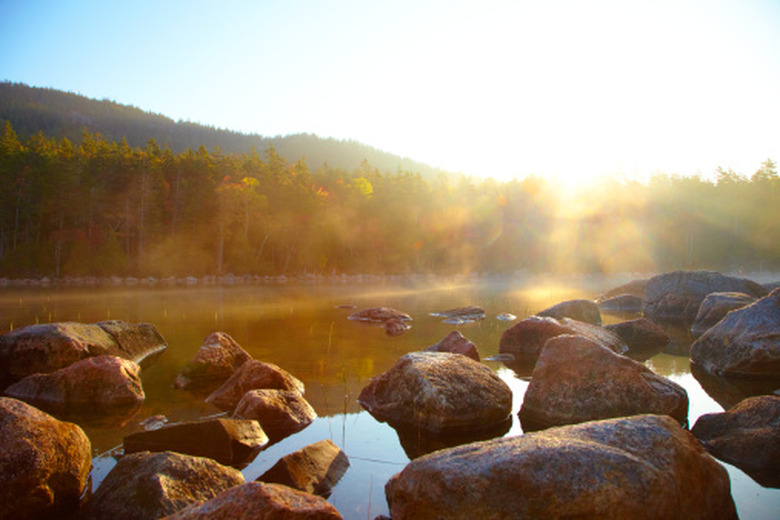5 Types Of Mechanical Weathering
Weathering, along with erosion, causes rocks to break down into smaller fragments; this usually takes place near the surface of the earth. There are two types of weathering: mechanical and chemical. Mechanical weathering causes rock to disintegrate into continuously smaller fragments as part of the rock cycle. Through weathering, igneous and metamorphic rock can be disintegrated into smaller and smaller fragments, and eventually these can become a part of sedimentary rock.
Plant Activity
Plant Activity
The roots of plants are very strong and can grow into the cracks in existing rocks. The roots become wedged in the cracks, and as they grow and expand they exert pressure on the rock until the it cracks further, with pieces of the rock eventually breaking apart.
Animal Activity
Animal Activity
Certain animals, such as moles, rabbits and groundhogs, dig holes in the ground that can expose underlying rocks to the effects of weathering. These holes allow water and other mechanical weathering agents to reach the previously covered rocks, initiating and speeding up the process of mechanical weathering.
Thermal Expansion
Thermal Expansion
The daily heating and cooling of rock, irrespective of the amount of water present, causes stress along the boundaries of various minerals that compose the rock. The reason for this is that different minerals expand and contract at different rates based on the temperature and composition. This results in mechanical weathering and the gradual breaking down of the rock.
Frost action
Frost action
The Idaho Museum of Natural History describes the effects of frost action by explaining that water, as it trickles into fractures and pores of the rock, freezes as temperatures drop. When this occurs, the volume of the ice increases approximately 10%, putting pressure on the rock and causing it to be broken apart.
Exfoliaton
Exfoliaton
When a rock breaks off into leaves or sheets along its joints it is referred to as exfoliation, states Pamela Gore, professor of Geology at Georgia Perimeter College. Uplift of the rock and the erosion of dirt covering the rock result in less pressure on the body of the rock. Layers which are not firmly joined together then have a tendency to peel off. The resulting mechanical weathering can result in the dome-shaped rock formations and boulders found in some western states of the U.S. Igneous rocks are especially susceptible to this type of mechanical weathering.
Cite This Article
MLA
Wolfenden, Scott. "5 Types Of Mechanical Weathering" sciencing.com, https://www.sciencing.com/5-types-mechanical-weathering-8048735/. 24 April 2017.
APA
Wolfenden, Scott. (2017, April 24). 5 Types Of Mechanical Weathering. sciencing.com. Retrieved from https://www.sciencing.com/5-types-mechanical-weathering-8048735/
Chicago
Wolfenden, Scott. 5 Types Of Mechanical Weathering last modified March 24, 2022. https://www.sciencing.com/5-types-mechanical-weathering-8048735/
